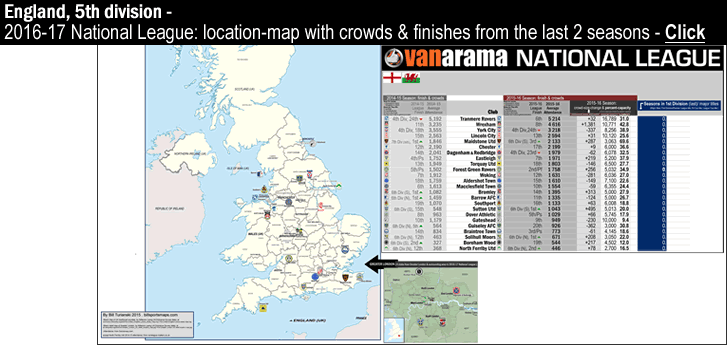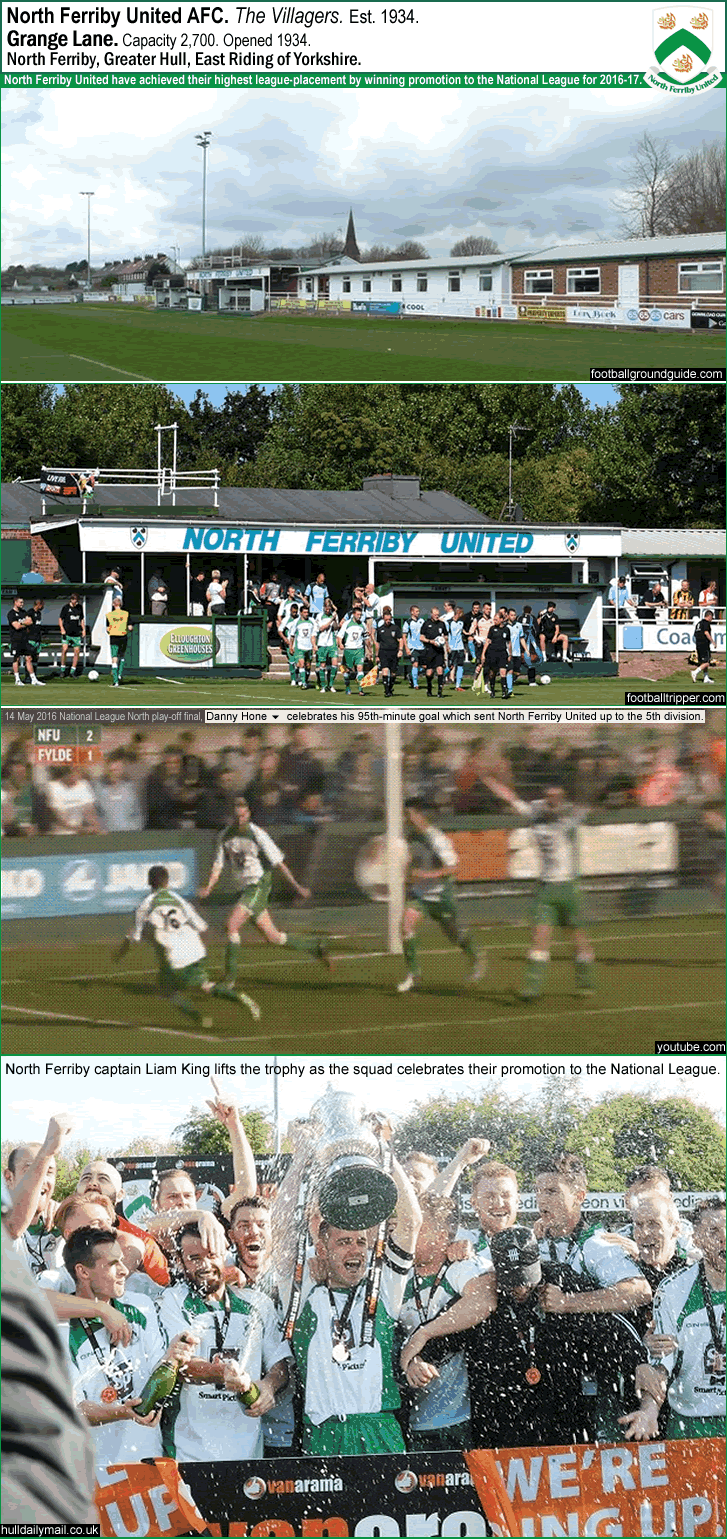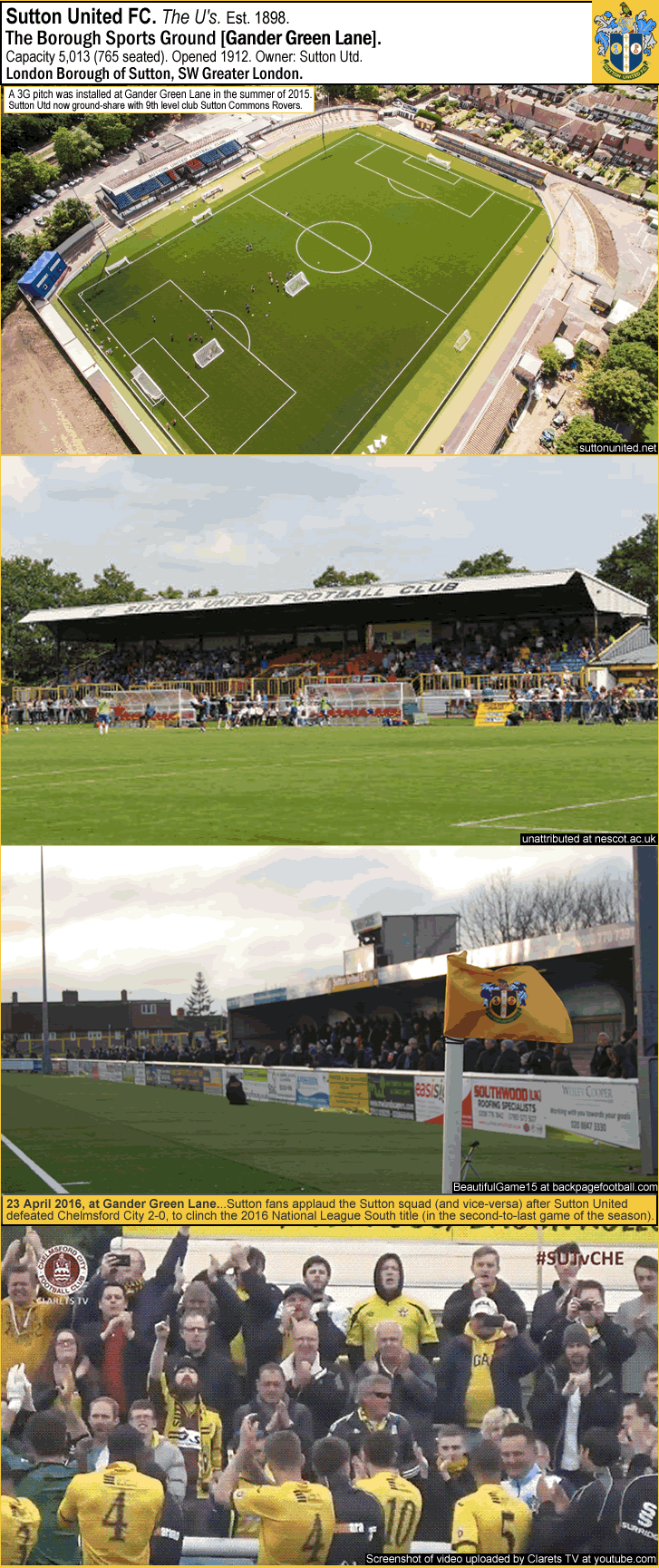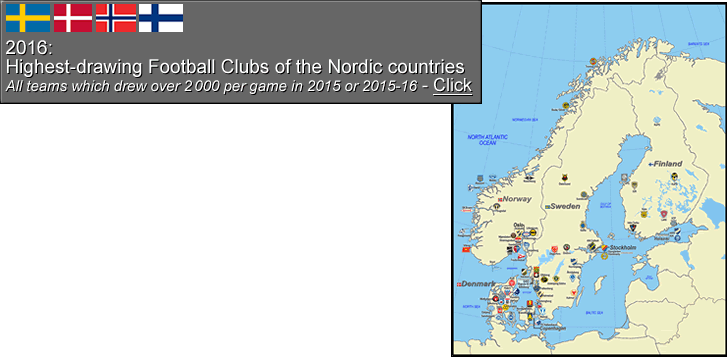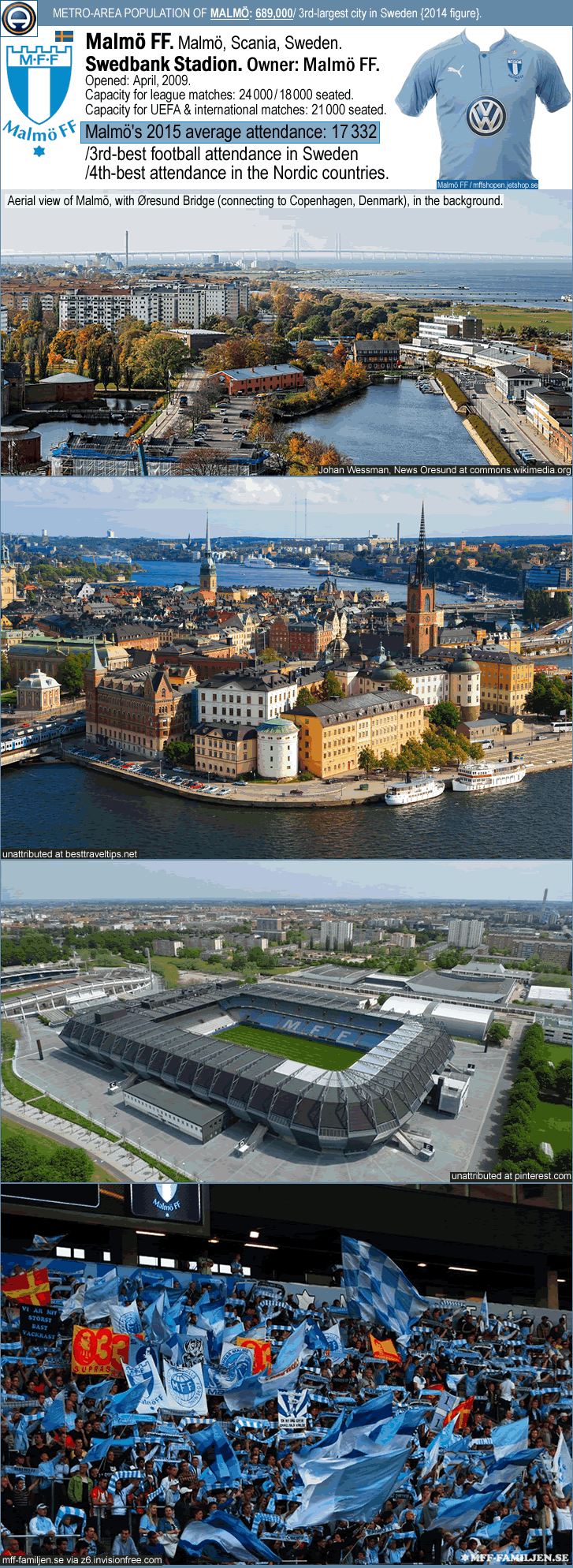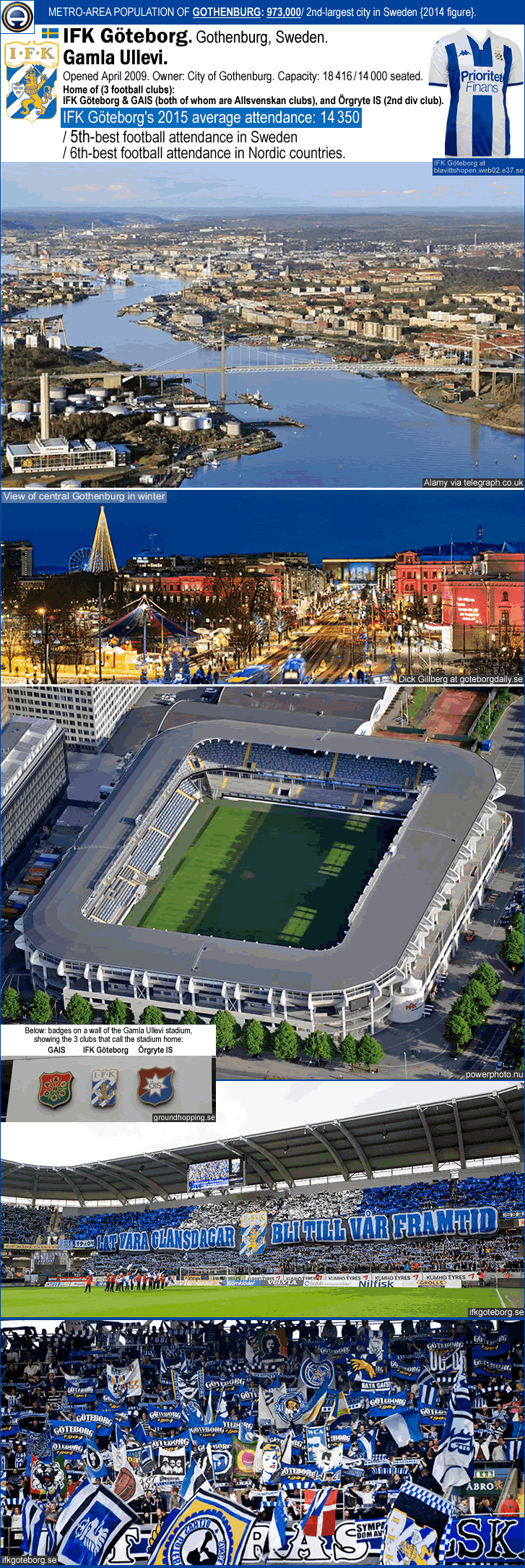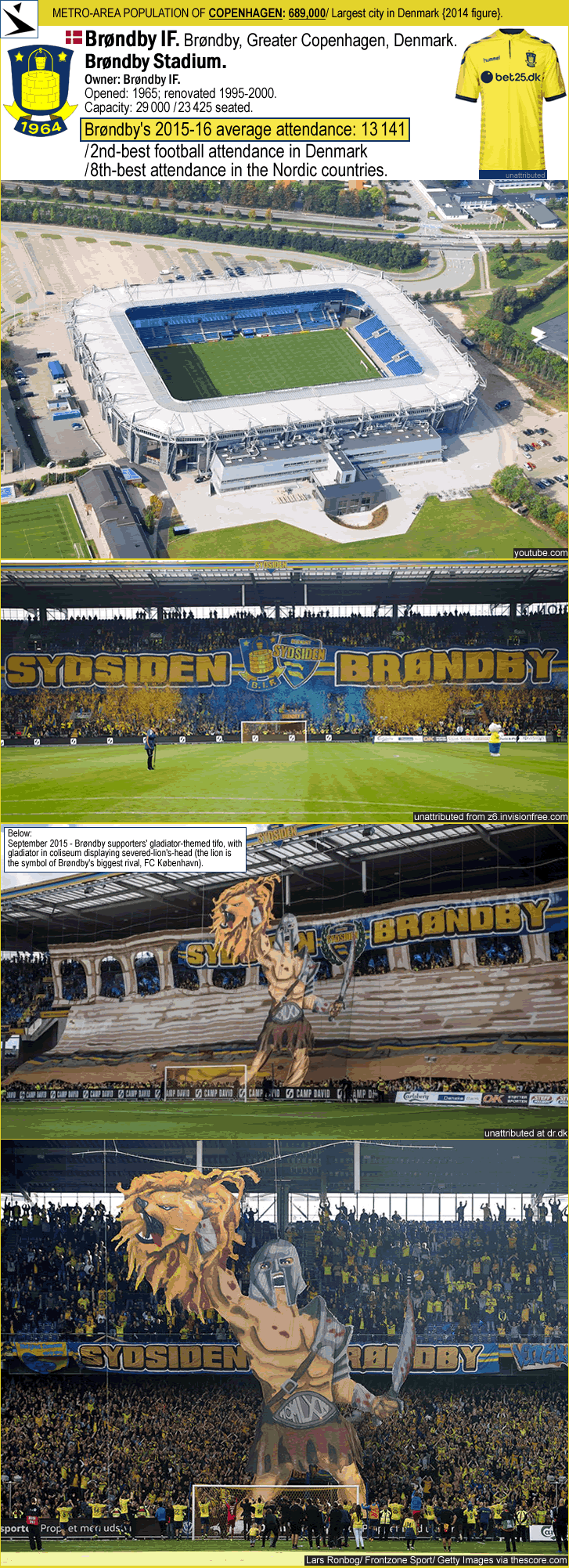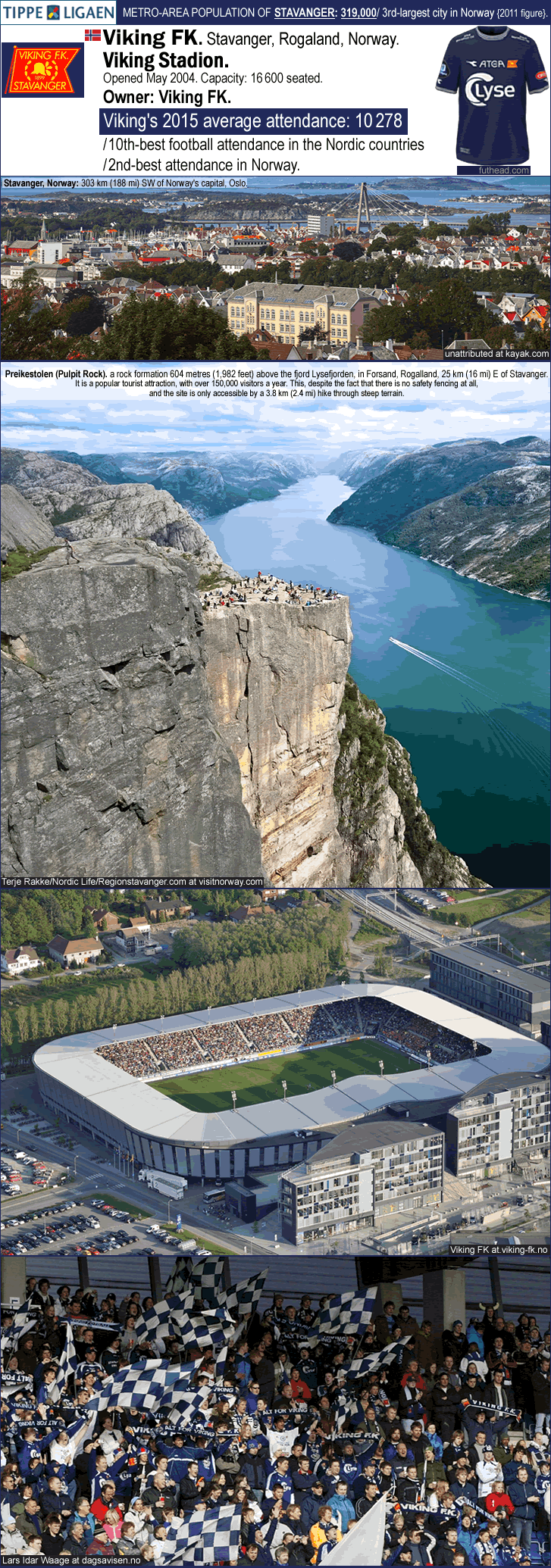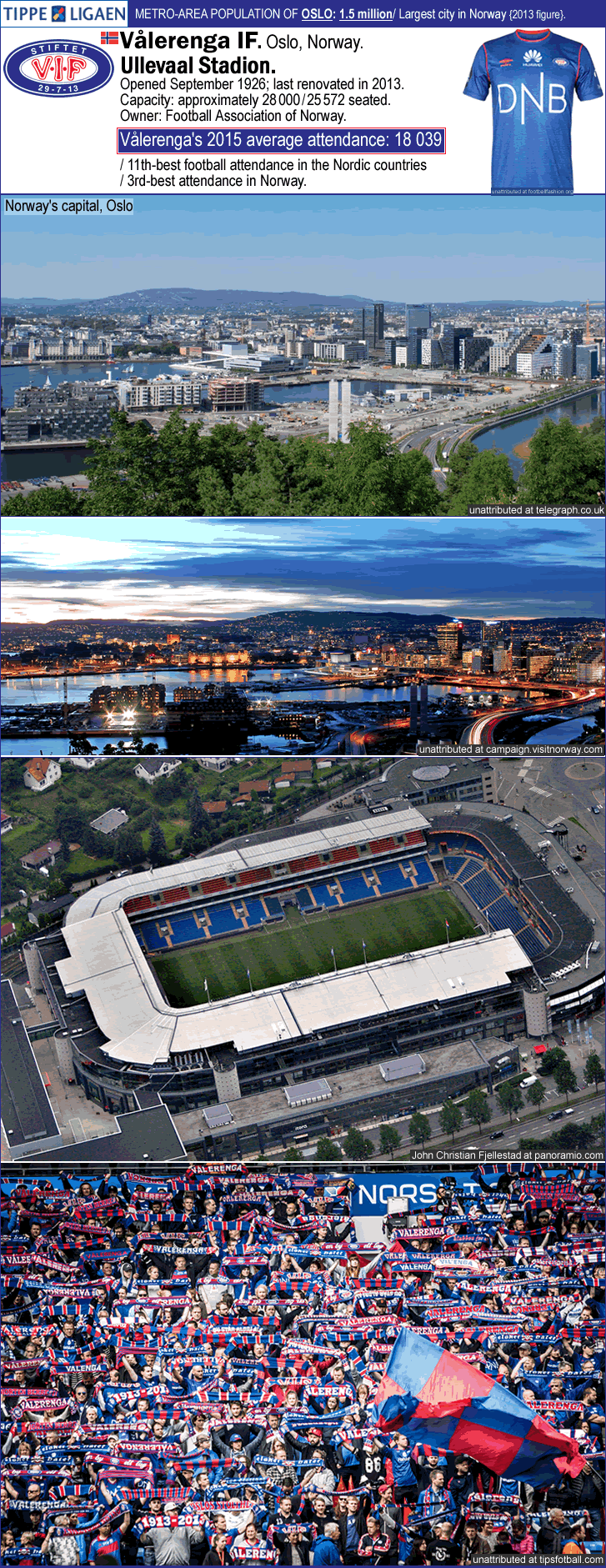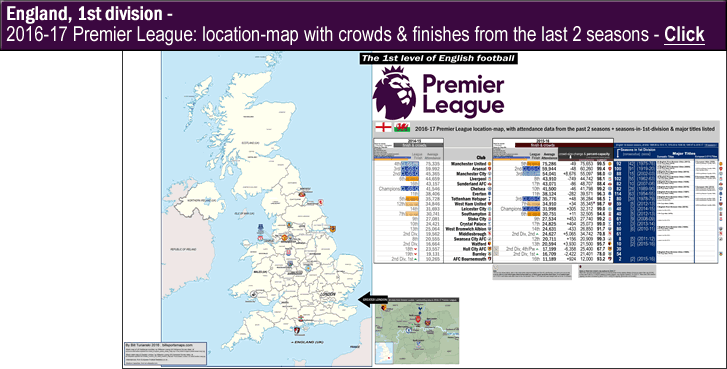
2016–17 Premier League (1st division England, incl Wales): map w/ 15/16-crowds-&-finish + titles-&-seasons-in-1st-division
…
…
By Bill Turianski on 31 July 2016; twitter.com/billsportsmaps.
Links…
-2016–17 Premier League (en.wikipedia.org).
-Table, fixtures, results, attendance, stats…PREMIER LEAGUE [Summary] (soccerway.com).
-2016-17 Premier League kits (historicalkits.co.uk).
-New crests for Manchester City and West Ham United (among others)…New season, new badges: We take a look at club crests which have changed for 2016/17 (skysports.com/football).
…
-
Below: the 3 promoted clubs for 2016-17 (Burnley, Middlesbrough, Hull City AFC)…
Burnley return straight back to the Premier League, as does the 2nd-division play-offs winner Hull City AFC. Middlesbrough finished in 2nd place in the second division last season, and now return to the Premier League after a 7-season absence.
-
•Burnley FC
Est. 1882. Nickname: the Clarets. Colours: Claret and Sky-Blue. Location: Burnley, Lancashire, situated (by road) 45 km (28 mi) N of central Manchester; also, Burnley is situated (by road) 20 km (12 mi) E of hated rivals Blackburn. Population of Burnley is around 73,000 {2011 census}.
Manager: Sean Dyche (age 45, born in Kettering, Northamptonshire).
From Reddit.com/soccer, Team Preview: Burnley.
2015-16 Football League Championship winners Burnley return straight back to the Premier League. 2016-17 will be Burnley’s 54th season in the 1st division…but it will be only the Clarets’ 3rd season in the top tier in the last 41 years. (Burnley were a founding member of the Football League, and played in the inaugural season of the English First Division in 1888-89./ Burnley League history (1888-89-2015-16).) Burnley have won the English title twice – their first championship was won in 1920-21, and their second title was won in 1959-60. Burnley also have 1 FA Cup title (1914), as well a two more appearances as an FA Cup finalist (losing to Charlton in 1947, and losing to Tottenham in 1962).
In 1959-60, Burnley pipped Wolverhampton and Tottenham for the title…
Burnley had a well-developed youth team set-up in the 1950s, and almost the entire title-winning-squad of 1959-60 had came through the Burnley youth team. During this period, Burnley became innovators as the first English club to train on a purpose-built training complex nearby their ground (as opposed to what every other club was doing back then, which was to simply train on the pitch they played their matches on, churning up their own home-field-playing-surface in the process). In 1958, former Burnley FW Harry Potts became Burnley manager (Potts served two spells at the helm of Burnley [1958-70; 1977-79]). The Burnley squad of that era was built around the midfield duo of Northumberland-born team-captain and right-half Jimmy Adamson (you can see him in the squad photo below at front-centre directly behind the trophy), and attacking-midfielder Jimmy McIlroy. The County Antrim-born McIroy, dubbed the Brain of Burnley, was an attacking-midfielder/inside-forward with neat footwork and a finely-honed passing ability. Jimmy McIroy scored 116 league goals for Burnley from 1950-62, and was a Northern Ireland international (below, on the left, you can see a photo of McIlroy, and an illustration of him playing for Northern Ireland). In the tightly-contested 1959-60 season, Burnley chased Wolverhampton and Tottenham the entire campaign, and only reached first place on the final day of the season, when they beat Manchester City 1-2 at Maine Road. But in 1962, the chairman of Burnley, Bob Lord, sold McIroy to Stoke City for a cut-rate £25,000, a move that some Burnley supporters labeled ‘insane’, and the Burnley team never was the same. And that began Burnley’s decline, a decline which saw the Clarets out of the First Division/top flight for 33 seasons. There was no first tier football for Burnley from 1976-77 to 2008-09…and that included the club’s nadir of a 7-season spell stuck in the Fourth Division in the 1980s-and-early-1990s. In the late 1990s, the club named a newly-rebuilt stand after Jimmy McIlroy (photos of the Jimmy McIlroy Stand can be seen further below).
Below is an illustration in honor of the title-winning 1959-60 Burnley squad (which I first posted in March 2008/ image below first appeared here, http://billsportsmaps.com [Burnley FC].
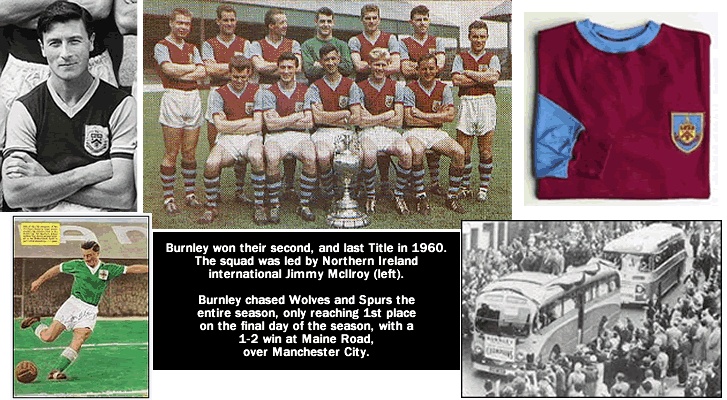
Image credits above – Jimmy McIroy photo unattributed at Clarets-Mad site, at clarets-mad.co.uk/ [article: We've wiped away our history]. Unattributed illustration of Jimmy McIroy playing for Northern Ireland, from NIFG site nifootball.blogspot.com/2007/04/jimmy-mcilroy. Photo of title-winning 1959-60 Burnley squad, photo unattributed at The Longside [Burnley fan-site] thefootballnetwork.net /[Burnley fan-site]. Photo of 59/60 Burnley jersey, from Toffs [image no longer there at...] toffs.com/retro-football-shirts/burnley. Burnley 1960 coach-top champions’ parade, photo from Lancashire Telegrapah, such as lancashiretelegraph.co.uk/Burnley Title win down to team effort.
Burnley FC have a very tiny catchment area…
When you look at a map of the highest-drawing clubs in England {here}, which shows how over-crowded with big and not-so-big clubs it is up in Lancashire, Merseyside, and Greater Manchester…and then when you look at how small the population of the town of Burnley is (about 73,000)…well, you can see why Burnley are a frugal club. Because, from where can Burnley hope to attract fans, what with Man U and Man City and Bolton and Wigan and Blackburn all within 30 miles of Burnley’s Turf Moor? And northwards, into central and northern Lancsashire and then into Cumbria and the Lake District, the population thins out considerably. And in the other direction, east, is the Pennines, which is a physical as well as a cultural barrier, because on the other side of the Pennines is Yorkshire, and you can forget about getting any people from Yorkshire to support a Lancashire club. So Burnley is boxed in, and the Clarets are doomed to have a very small catchment area for potential fans. And thus Burnley have become a club that is known for spending within its limited means. At the start of the 2014-15 Premier League season, some scoffed at the then-newly-promoted-Burnley for not spending any money at all on new players, and then they went straight back down. But now, two years later here they are back in the Premier League…and Burnley did it flying under the radar and once again without splashing the cash around. Although in July 2016 they did buy, from Charlton, an Iceland starter (the MF Jóhann Gudmondsson).
Burnley’s squad is notable for its preponderance of British-and-Irish-born players…
Over three-quarters of Burnley’s squad is from the United Kingdom or from Ireland. Take a look at their current squad and see what I mean…when I wrote this on 27 July 2016, Wikipedia listed 27 players on Burnley’s first team squad, 16 of which are England-born, 3 of which are Northern-Ireland-born, 2 of which are Republic-of-Ireland-born, one of which is Scotland-born, one of whom is also a key player on the Wales national team (Sam Vokes). If you do the math you find that that’s 22 of 27 Burnley players (81%) coming from the British Isles (England/Northern Ireland/Scotland+Ireland)}.

Photo and Image credits above –
Screenshot of 2016-17 Burnley jersey, image by burnleyfootballclub.com. Aerial shot of Turf Moor with Burnley Cricket Ground alongside, photo by Simon Kirwan at the-lightbox.com. Shot of streets outside Turf Moor [Feb. 2014], with Jimmsy McIlroy Stand visible in background, photo by Richard Ratcliffe at summiteer.co.uk/2014/Feb2014/Burnley. Shot of club shop and cantilevered stand at Turf Moor with looming winter skies above, photo unattributed at pinterest.com. Interior/panoramic shot of Turf Moor, photo by Carlos Rosende at marcadorint.com/championship/burnley-turf-moor, Illustration of Burnley 2016-17 kits from en.wikipedia.org/Burnely_FC Andre Gray, photo by clitheroeadvertiser.co.uk. Sam Vokes, photo unattributed at theleaguepaper.com.
…
-
•Middlesbrough FC
Est. 1876. Nickname: Boro. Colours: Red and White [usually with a wide band of white on their red jersey]. Location: Middlesbrough, Teesside, situated (by road) 65 km (41 mi) S of Newcastle. Population of Middlesbrough (borough-population) is around 138,000, while the Teesside built-up-area (aka Greater Middlesbrough) has a population of around 376,000 {2011 census}. That makes Middlesbrough the 18th largest Urban Area in the United Kingdom. {See this, List of urban areas in the United Kingdom (en.wikipedia.org).}
Manager: Aitor Karanka (age 42, born in Vitoria, Basque Country, Spain).
From Reddit.com/soccer, Team Preview: Middlesbrough.
Middlesbrough finished in 2nd place in the second division last season, and now return to the Premier League after a 7-season absence (which was preceded by an eleven-season spell in the Premieer League, from 1998 to 2009). This season [2016-17] will be Middlesbrough’s 61st season in the top flight. (Boro’s first season in the 1st division was in 1902-03./ Middlesbrough League history here.) Middlesbrough has a scant League Cup in their trophy case (won in 2004), although they did make it to a UEFA Cup final (losing to Sevilla in 2006), as well as losing in both an FA Cup final and a League Cup final in the same disastrous season 20 years ago (in 1997, when Middlesbrough lost to Leicester City in the League Cup final, then were relegated by finishing in 19th place, and then lost to Chelsea in the FA Cup final).
Middlesbrough were under pressure to get back to the Premier League, and after a March locker-room-dustup, Boro finished undefeated (6-4-0)…
After Middlesbrough’s wrenching loss to Norwich City in the 2014-15 Championship play-offs final, and after a few years of considerable financial outlay by owner Steve Gibson, there was a great deal of pressure on the Boro squad and on the coaching staff to gain promotion last season. And the pressure almost got to manager Aitor Karanka. At one point in time in March 2016, it looked like Karanka was going to walk away from the club, after a dressing room row revealed that there were players secretly colluding against him. Karanka was actually not allowed at the training grounds the day after he stormed out of that meeting. But then, after Boro lost that weekend to relegation-doomed Charlton, and after another (emergency) meeting was called for by owner Gibson, Karanka and the players worked it out, and then Boro went 6 wins, zero losses and 4 draws in their final 10 games. {See this article posted right before the final match in May, from the Independent, Aitor Karanka has happy Middlesbrough on brink of big time after bump in the road (by Martin Hardy at independent.co.uk/sport/football).}
Boro’s cathartic pitch invasion of 7 May 2016…
And so getting that crucial result in the last match of the season (a 1-to-1 draw at home versus fellow-promotion-rivals Brighton, which clinched promotion), ended up in a joyous release of pent-up angst. And that release of anxiety manifested itself in one of the more exuberant pitch-invasions in recent memory. That pitch invasion was captured by visiting Seagulls fan and Instagram-ace Danny Last, in one of the best sports photos from the 2015-16 season {you can see that brilliant photo below, and you can see that photo along with others at: How Boro’s promotion party looked through the eyes of Brighton fans (Teesside Gazette at gazettelive.co.uk/football, by Graham Corking).}.
It’s great to see Middlesborough back in the Premier League. They might not have many titles, but they sure have devoted fans and they sure have history. This is the place where Brian Clough first made his mark (Clough, before he became legendary as Derby County and then as Nottingham Forest manager, played 12 seasons [1955-61], for a then-2nd-division Middlesbrough, scoring an astounding 197 league goals in 213 games). {Here is an article with illustrations that I posted in December 2007, Middlesbrough FC.} Beset by heavy industry, Middlesbrough is frankly charm-deficient and is not the sort of town that WAGS would want their top-shelf-footballer-partners to play for. The last thing Middlesbrough is, is glamorous. That’s why I can’t dislike them.

Photo and Image credits above –
Screenshot of 2016-17 Middlesbrough jersey, image from mfc.co.uk/news/article/2016/201516-home-and-away-premier-league-kits-revealed. Aerial shot of Riverside Stadium, photo unattributed at thejournal.co.uk, here. Entrance to the Riverside Stadium, photo by Chris Heaton at geograph.org.uk. 1st photo of Boro fans pitch invasion by Danny Last at instagram.com/p/BFHDUlGP91z/ and at How Boro’s promotion party looked through the eyes of Brighton fans (gazettelive.co.uk/sport). 2nd photo of Boro fans pitch invasion by Phil Noble/Reuters via theguardian.com. 3rd photo of Boro fans pitch invasion by Nigel Roddis/Getty Images via irishtimes.com/sport/soccer.
…
-
•Hull City AFC
Est. 1904. Nickname: the Tigers. Colours: Amber and Black [usually with amber/black vertical-stripes on their jersey]. Location: Kingston upon Hull (aka Hull), East Riding of Yorkshire, situated (by road) 98 km (61 mi) E of Leeds. Population of Hull (borough-population) is around 257,000, while the Kingston upon Hull built-up-area (aka Greater Hull) has a population of around 314,000 {2011 census}. That makes Hull the 24th largest Urban Area in the United Kingdom.
Manager: ?
From Reddit.com/soccer, Team Preview: Hull City.
Hull City AFC return straight back to the top flight after having won the 16/17 League Championship play-off final. Hull is basically more of a rugby town than a football town. There are 2 first-division rugby league clubs in Hull – Hull City FC and Hull Kingston Rovers – and between them they average around 20-K-worth of fan support (or more). So it has always been an uphill battle for the Hull association football club to establish itself in the upper tiers of English football, because a sizable chunk of the local sports fans and a great deal of the local sports media are all oriented towards rugby. And the League history of Hull City AFC shows that plain as day, because the Tigers have been around for over 110 years, yet this is only their 5th season ever in the 1st division. (Hull’s first season in the top flight was in 2008-09./ Hull City AFC League history here.) Hull City have no major titles but were FA Cup finalist a couple of seasons ago (in 2014, losing to Arsenal).
Hull backed their way into the Premier League, and there are serious signs of fan-unrest up there on the Yorkshire coast…
Hull sort of backed their way into the Premier League last season, with a rather alarming minus-6.3-K-drop-off in attendance. That drop-off was basically twice-as-worse as they had the previous time they were relegated (they had a minus-3.2-K drop-off in 2010-11, after having been relegated in May 2010). That much larger drop-off in crowd size is mostly attributable to the continuing histrionics of owner Assem Allam (see the text-block in the crest-history section of the illustration below). There are a whole lot of longtime Hull City fans who have stopped going to games, because of the unhinged behavior of Allam. {To get a good look at the Hull City supporters many grievances with Allam, see this site, allamout.co.uk.} {Also see this, from the Hull City Supporters site, by Andy Mills, from March 2015, The divisive figure of Assem Allam.} Then on 21 June, manager Steve Bruce walked off the job. Bruce, who had been defending Allam for several years, now just seems to have had it. But by having bailed out less than 4 weeks before the start of the new season, Bruce has sullied his own legacy by bolting – thus leaving the club to twist in the wind. The widespread opinion is that Hull are a lock for going straight back down, again.
A Hull City fan at the comments section of a Guardian/football article, articulated the gloomy situation the best…
…”Thats why us fans are narked. We won’t sit by and watch a tinpot team. Remember the first time we got promoted to the prem? Packed out Wembley (highest play-off final attendance at that point) and won with a stunning volley from a local lad (Dean Windass). Filled the city centre to celebrate and painted the town black and amber. A few games in and we beat four London clubs on the trot to propel ourselves to joint-top part way into the season. We then made a fool of ourselves with a shocking dip in results and things like mid-pitch half-time team talks (entertaining non-the-less). But it was all fun and enjoyed with passion. This time around? Gruelling championship season with a niggling feeling of discontent and disengagement. Play-off final with less than 30,000 fans attending. :-( Numerous anti-Allam protests even though none of the Allam family attended the games. So, whats the reason for this build-up of discontent? Simply that we feel our club is being taken away from us. Made tinpot and plastic. Using it as a money-making machine, trying to market us to the middle east by renaming us Hull Tigers whilst completely alienating the existing fan-base. Telling loyal fans to join a membership scheme which scraps lower fees for kids and pensioners and telling us all to ‘earn your stripes’. I could go on. Steve Bruce provided a minor outlet for us with his great management through these difficult times, hence the big ‘In Bruce we Trust’ banners. Him leaving and no new appointment really is the final straw. From Hull: We will not accept a tinpot team as our local club, however successful you can make it. We want real passion, grit and pride. There’s still elements of those three attributes around, they’re just hard to find.”…(comment by whiterosetiger at Have Hull City suffered the worst-ever Premier League pre-season? by Louise Taylor at theguardian.com/football/blog).
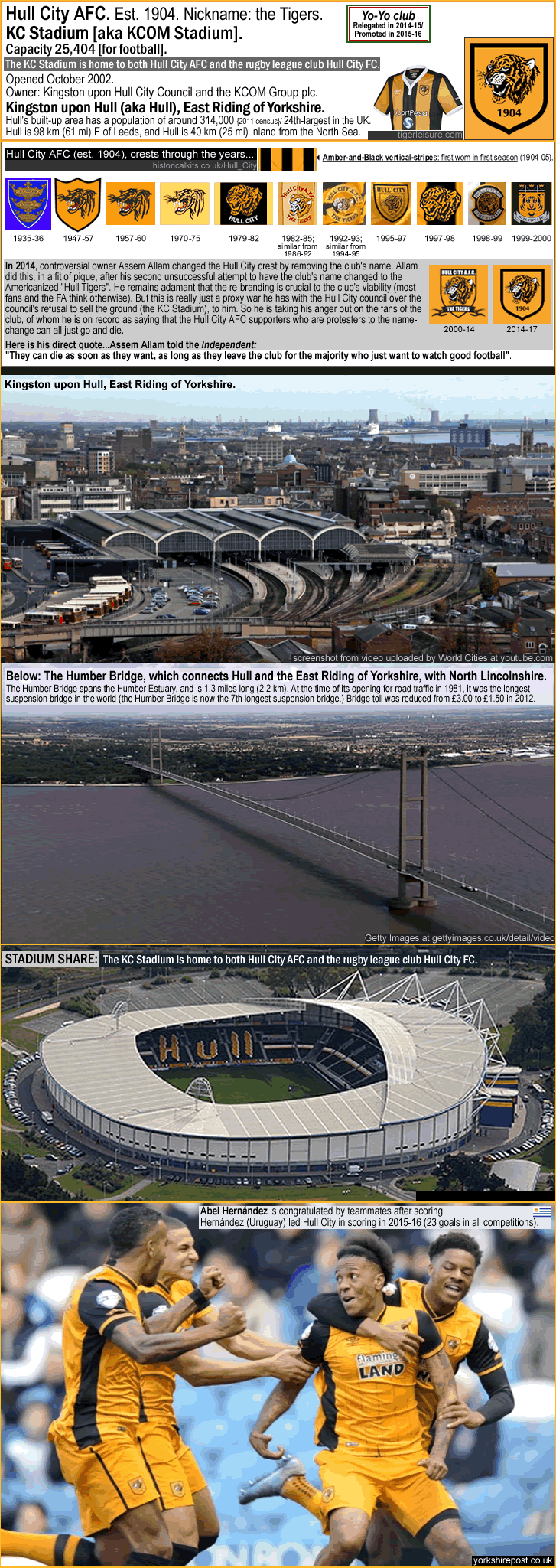
Photo and Image credits above –
Screenshot of 2015-16 Hull City AFC jersey, image from tigerleisure.com/jpg.
Hull City AFC crests through the years, most crest images from historicalkits.co.uk/Hull_City; 1979 badge is from a photo at Toffs, here ; 2000 tiger-in-white-shield crest is a photo from the Amber Nectar blog, [scroll down a bit for it at the following link...] ambernectar.org/blog/the-soul-of-hull-city. View of central Hull, screenshot from video uploaded by World Cities at youtube.com. Aerial image of the Humber Bridge, screenshot of video frame by Getty Images at gettyimages.co.uk/detail/video/aerial-humber-bridge-over-estuary-east-riding-stock-video-footage. Photo of the KS Stadium, unattributed a kooora.com. Abel Hernández, photo by yorkshirepost.co.uk/football.
___
Thanks to the following…
-Blank map of UK historic counties, by Nilfanion (using UK Ordnance Survey data), at File:United Kingdom police areas map.svg (commons.wikimedia.org).
-Blank relief map of Greater London, by Nilfanion (using UK Ordnance Survey data), at File:Greater London UK relief location map.jpg.
-Seasons in 1st division, England – First Level All-Time Tables 1888/89-2015/16 (rsssf.com).
-Attendances from E-F-S site, european-football-statistics.co.uk/attn.htm.
Thanks to the contributors at en.wikipedia, at 2016–17 Premier League.
